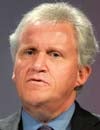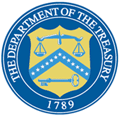GE Timeline: Public Assurances, Private Anxiety
In his book about managing the financial crisis, former Treasury Secretary Henry Paulson recounts conversations with Jeffrey Immelt, the CEO of General Electric, during the pivotal months of late 2008. As the government moved forcefully to keep credit markets working and shore up banks, Paulson says Immelt raised concerns about GE’s ability to borrow in the commercial paper market. The portrayal differs from that in some of GE’s statements in public forums and documents from the same period. Related story.
| Date | Financial Events | Paulson‘s account | GE’s Public Statements |
|---|---|---|---|
| Sept. 7, 2008 | Fannie Mae and Freddie Mac are placed in conservatorship. Treasury extends credit to keep the mortgage lenders afloat. | ||
| Sept. 8 |
 Paulson says Immelt calls him in late morning, “to tell me that his company was having problems selling commercial paper.” Paulson: The report “alarmed me.”
Paulson says Immelt calls him in late morning, “to tell me that his company was having problems selling commercial paper.” Paulson: The report “alarmed me.”
|
||
| Sept. 14 | In a letter to investors, GE says its commercial paper program, which totals more than $90 billion, remains “robust.” | ||
| Sept. 15 |
 Lehman Brothers files bankruptcy. Bank of America announces it will buy Merrill Lynch & Co. for $50 billion. Dow drops 504 points.
Lehman Brothers files bankruptcy. Bank of America announces it will buy Merrill Lynch & Co. for $50 billion. Dow drops 504 points.

|
Paulson says Immelt stops by his office late in the day. “Now here was Jeff telling me that GE was finding it very difficult to sell its commercial paper for any term longer than overnight.” Paulson finds GE’s funding problems “startling.” | |
| Sept. 16 |
 Federal Reserve Board authorizes $85 billion credit line for American International Group (AIG).
The value of shares in one of the industry’s most venerable money market funds falls below $1, an event called “breaking the buck” caused primarily from losses on Lehman Brothers commercial paper and medium-term notes. Because money market funds are major buyers for commercial paper from GE and other companies, credit fears spread.
Federal Reserve Board authorizes $85 billion credit line for American International Group (AIG).
The value of shares in one of the industry’s most venerable money market funds falls below $1, an event called “breaking the buck” caused primarily from losses on Lehman Brothers commercial paper and medium-term notes. Because money market funds are major buyers for commercial paper from GE and other companies, credit fears spread.
|
||
| Sept. 25 | Immelt and other top GE executives have conference call with investors and analysts. Regarding GE’s commercial paper market, the CFO says: “You really don’t have any near-term pressure of any magnitude.” | ||
| Oct. 1 |
 GE announces a $12 billion stock offering and says investor Warren Buffett’s Berkshire Hathaway will buy $3 billion in preferred shares. In a statement filed with the SEC, Immelt is quoted as saying, “… in the recent market volatility we continue to successfully meet our commercial paper needs.” In another SEC filing with the SEC, the company also says: “A large portion of GE Capital’s borrowings have been issued in the commercial paper markets, and, although GE Capital has continued to issue commercial paper, there can be no assurance that such markets will continue to be a reliable source of short-term financing for GE Capital.”
GE announces a $12 billion stock offering and says investor Warren Buffett’s Berkshire Hathaway will buy $3 billion in preferred shares. In a statement filed with the SEC, Immelt is quoted as saying, “… in the recent market volatility we continue to successfully meet our commercial paper needs.” In another SEC filing with the SEC, the company also says: “A large portion of GE Capital’s borrowings have been issued in the commercial paper markets, and, although GE Capital has continued to issue commercial paper, there can be no assurance that such markets will continue to be a reliable source of short-term financing for GE Capital.”
|
||
| Oct. 7 | The Federal Reserve Board announces the creation of the Commercial Paper Funding Facility (CPFF), to backstop U.S. issuers of commercial paper. | ||
| Oct. 9 | A foreign banker relays concerns about GE’s survival to Paulson. Paulson believes the new Federal Reserve program to buy commercial paper will enable GE to “weather the crisis.” | ||
| Oct. 10 | In a conference call, an analyst asks about government bailout actions and the backup capacity for GE’s commercial paper. GE’s CFO says the company has a “great broad” commercial paper market: “We haven’t had any trouble funding ourselves.” With regard to government rescue efforts, including the funding facility for commercial paper, the CFO says: “We don’t plan on using any of those.” Immelt adds: “Even with all this volatility, we have never had issues in the CP market rolling our paper.” | ||
| Oct. 12 |
 Paulson calls Immelt after 9 a.m. about whether GE could take part in a soon-to-be announced FDIC debt guaranty program. “Because it was not a bank,” Paulson writes, “GE would not be eligible for such a program and might be disadvantaged competitively.” He tells Immelt: “I don’t think we can do anything for GE.”
Paulson calls Immelt after 9 a.m. about whether GE could take part in a soon-to-be announced FDIC debt guaranty program. “Because it was not a bank,” Paulson writes, “GE would not be eligible for such a program and might be disadvantaged competitively.” He tells Immelt: “I don’t think we can do anything for GE.”
|
||
| Oct. 13 |
 Treasury makes a take-it-or-leave it offer to buy shares in nine banks for $125 billion, part of a $250 billion Troubled Asset Relief Program to prop up banks that is formally announced the next day.
Treasury makes a take-it-or-leave it offer to buy shares in nine banks for $125 billion, part of a $250 billion Troubled Asset Relief Program to prop up banks that is formally announced the next day.
|
Immelt calls Paulson and says the Fed’s newly announced Capital Purchase Program will hurt GE, whose financing arm is bigger than most banks but not part of the CPP. His people are “nervous,” Immelt tells Paulson: “I’m worried about my company and our ability to roll over paper in the face of this.” | |
| Oct. 14 | The FDIC creates Temporary Liquidity Guarantee Program to guarantee senior debt of all FDIC-insured institutions and holding companies. | ||
| Oct. 16 |
 Immelt visits Paulson’s office to make the case that the FDIC also should guarantee GE Capital’s debt issues. Immelt believes GE is at a disadvantage under the new bailout programs, “making it difficult,” Paulson writes, “for the company to fund itself.” According to Paulson, Immelt says, “We are the ones out there making the loans that the banks aren’t, and we need help.” Paulson says he knew Immelt “was right” and told him “we would explore it with his finance team and the FDIC.” Paulson says he and one of his aides “worked hard to get (FDIC chair) Sheila (Bair) comfortable with making this decision.”
Immelt visits Paulson’s office to make the case that the FDIC also should guarantee GE Capital’s debt issues. Immelt believes GE is at a disadvantage under the new bailout programs, “making it difficult,” Paulson writes, “for the company to fund itself.” According to Paulson, Immelt says, “We are the ones out there making the loans that the banks aren’t, and we need help.” Paulson says he knew Immelt “was right” and told him “we would explore it with his finance team and the FDIC.” Paulson says he and one of his aides “worked hard to get (FDIC chair) Sheila (Bair) comfortable with making this decision.”
|
||
| Oct. 23 |
 FDIC announces change in eligibility for TLGP, broadening definition to include GE.
FDIC announces change in eligibility for TLGP, broadening definition to include GE.
|
||
| Nov. 11 | Treasury announces streamlined mortgage loan modification program. | ||
| Nov. 12 |
GE and FDIC reach agreement so that company can participate in the TLGP.

|
||
| Dec. 16 | In conference call with analysts, Immelt says GE’s use of the FDIC loan guarantee program and other government programs has “been powerful and helpful.” | ||
| Feb. 27, 2009 | GE cuts its quarterly dividend by two-thirds to save $9 billion annualized. | ||
| March 12 | GE announces that Standard & Poor’s cut its triple-A credit rating one notch. | ||
Source: “On the Brink: Inside the Race to Stop the Collapse of the Global Financial System,” by Henry Paulson; SEC filings; Federal Reserve Bank of St. Louis; GE
Director of Research Lisa Schwartz contributed to this chart.
What We’re Watching
During Donald Trump’s second presidency, ProPublica will focus on the areas most in need of scrutiny. Here are some of the issues our reporters will be watching — and how to get in touch with them securely.
Learn more about our reporting team. We will continue to share our areas of interest as the news develops.

Sharon Lerner
I cover health and the environment and the agencies that govern them, including the Environmental Protection Agency.

Andy Kroll
I cover justice and the rule of law, including the Justice Department, U.S. attorneys and the courts.

Jesse Coburn
I cover housing and transportation, including the companies working in those fields and the regulators overseeing them.
If you don’t have a specific tip or story in mind, we could still use your help. Sign up to be a member of our federal worker source network to stay in touch.







